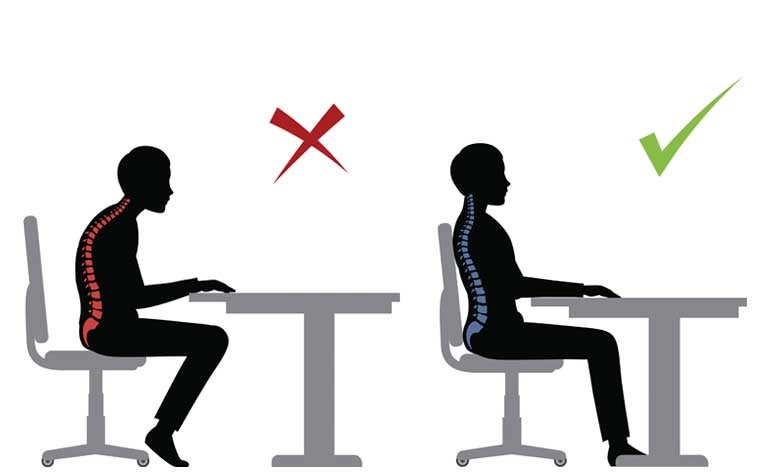
Practice safe office ergonomics to avoid neck and back strains from prolonged sitting at the desk.
Do you spend most of your work day at your desk? Here are simple tips to protect your back and neck.
The height of a typical office table (750mm) was initially designed to be best suited for people about 1.80 m tall. That’s because the standard table height comes from the era when office tables were mostly used for paperwork, not computing.
Given that in Singapore the typical male is 1.71 m tall and the typical female, 1.6 m, it is no wonder that so many desk-bound workers are at risk of work-related injury due to poor ergonomics.
To make your workstation more ergonomically comfortable, follow these simple tips below, as shared by occupational therapists from the
Department of Occupational Therapy at
Singapore General Hospital (SGH), a member of the
SingHealth group.
Watch the video!
Chair ergonomics
Your elbows should form a 90 degree angle and stay close to your body while you’re typing or using the mouse.
Your arm rests shouldn’t prevent you from pulling your chair close to the table. If this is a problem, remove them.
Sit in a slightly reclining posture, with your back fully supported.
If your seat cushion reaches behind your knees, use additional lumbar support to reduce the seat depth.
Don't let your feet dangle. Find a proper foot rest. Experiment with various heights.
Table ergonomics
Avoid reflective work surfaces, such as glass.
Keep your most commonly used items at arm's length. Consider getting a monitor arm to free up some space on your desk.
Ensure sufficient knee clearance and leg room. Avoid storing items under your table, as you may find yourself unable to move your legs and feet freely.
Monitor ergonomics
The top of the screen should be at, or slightly below, eye level, and an arm's length away.
If you are using a CRT (cathode-ray tube) monitor, make sure it is flicker free by increasing its vertical refresh rate to 70-90 Hz. Liquid crystal display (LCD) monitors normally don’t flicker.
For eye comfort, it is preferable to use dark characters against a bright background.
Your monitor should not face a window or be installed in front of one. Make sure your light source is sideways.
Keyboard and mouse ergonomics
The keyboard and mouse should be at elbow height.
Don't rest your wrists or hands on a palm or wrist rest when typing. These rests are designed to provide support only during breaks.
Special tips for laptop users
Use a separate keyboard and mouse when you need to use your laptop for more than an hour.
Place your laptop on an ergonomic riser, or even a phonebook, in order to position the monitor at the appropriate level.
Use a screen size of at least 14 inches.













 Get it on Google Play
Get it on Google Play